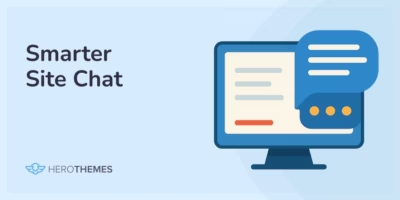How to Respond to Angry Emails: Tips, Strategies, and Examples that Work
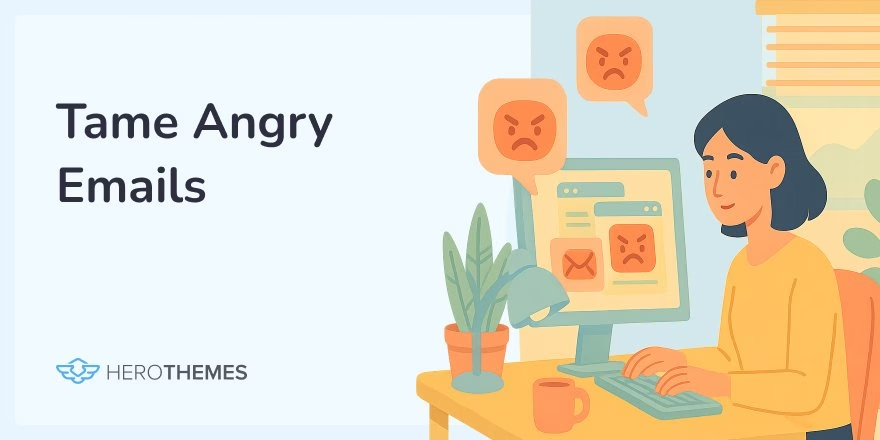
Angry emails aren’t rare. But knowing how to respond to them calmly and professionally? That’s a skill that sets good communicators apart.
You’ll eventually face a message filled with frustration, rudeness, or passive-aggressive jabs, and that can be stressful. The key is to stay calm, listen, and resolve the problem calmly and clearly.
First, take a breath—do not hit “Reply” immediately. Give yourself time to cool off and avoid letting irritation shape your response.
When you do reply, start with empathy:
- Apologize for the situation and acknowledge the customer’s feelings. Phrases like “I’m sorry you’ve had this experience” or “I understand why you’re frustrated” show you care.
- Always keep the tone respectful and solution-focused. Research shows that 83%1 of customers stay loyal if their complaints are handled well, so how you respond really matters.
When crafting your reply, use a simple “positive sandwich” structure.
Keep each sentence concise and use straightforward language. Avoid blaming or arguing. Say what you will do (offer a replacement, refund, or workaround) rather than why the customer is “wrong.”
Now, let’s look at each point in more detail.
In This Guide
Best Tips to Respond to Angry Emails
1. Never Respond in Anger
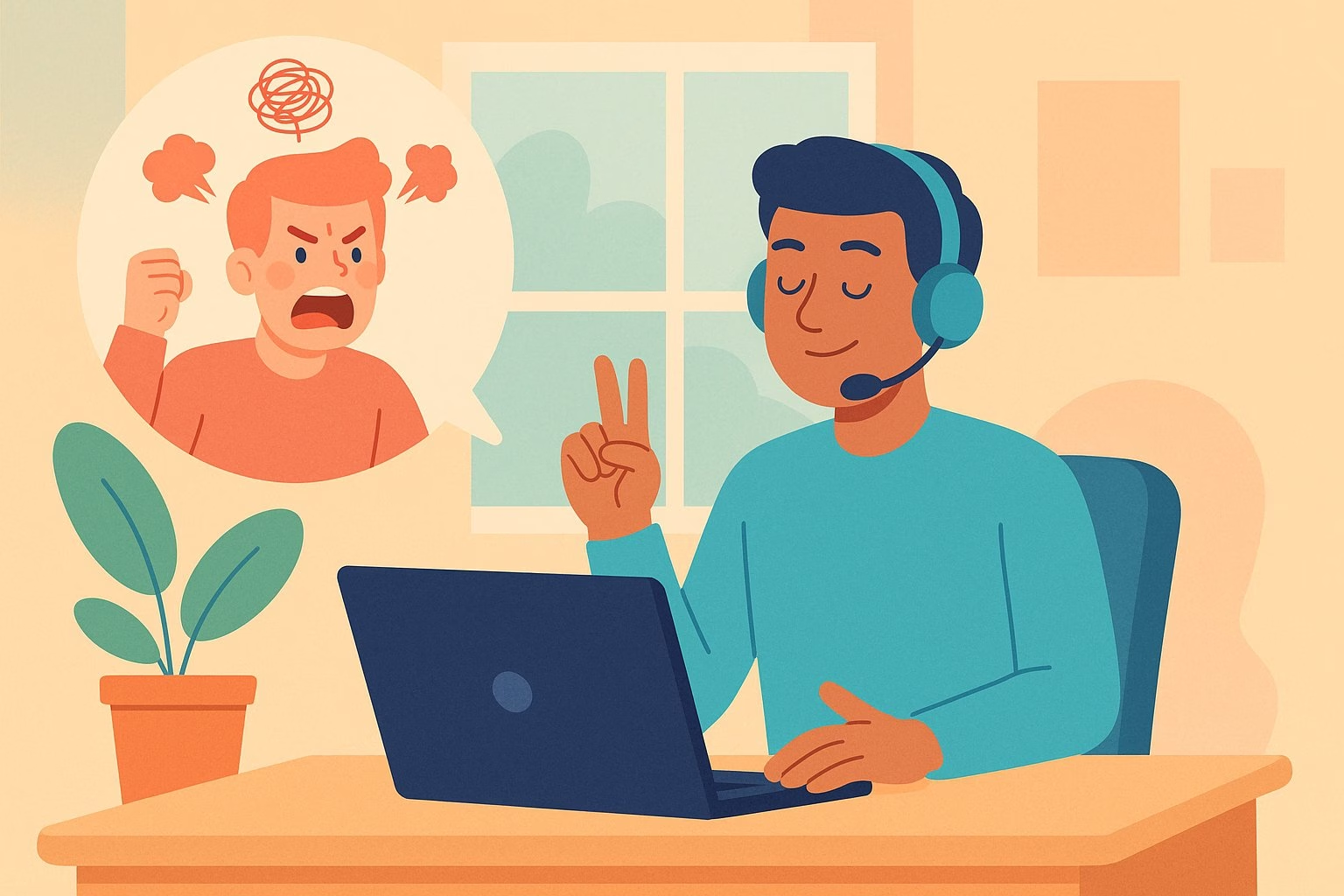
Before you draft any reply, pause and breathe. Write when you’re calm.
A good tactic is to write out your initial angry reaction privately (on paper or a draft) and then delete it.
Tell yourself it’s not personal. The customer’s anger is usually about the problem, not at you.
If needed, step away from email for a few minutes or do something quick to clear your head.
Only when you feel composed should you re-read the email and start your actual response. This prevents any sharp or defensive language from sneaking in.
Remember the old proverb Brad Cleveland cites:
“A gentle answer turns away wrath”.
You want gentle, not venomous.
- Don’t reply immediately: Wait until you’ve calmed down to avoid reacting emotionally.
- Take a break: Breathe or walk away. You can even vent privately (write an angry draft you won’t send).
- Reread the message: By the time you come back, reread it with fresh eyes. Are you still upset? If yes, breathe again.
2. Show Empathy and Apologize
When you do respond, lead with empathy. Even if the customer’s tone was rude or unfair, recognize their frustration and validate it.
You might write, “I’m very sorry that this happened. I understand how upsetting it is”.
Good apologies say “I’m sorry” and “I understand”.
Use “I” phrases about yourself or the situation, not “you” phrases that can sound blaming.
For example, use “I think there may have been a misunderstanding” rather than “You misunderstood”. This way you sound helpful instead of defensive.
It also helps to acknowledge their anger directly and politely. You could say, “I understand why you’re upset” or “You have every right to feel frustrated.” These simple lines often calm people down.
This shows you’re on their side. Don’t tell them to “calm down” or say “It’s not our fault”. Those phrases will only escalate the tension.
- Acknowledge feelings
- Apologize sincerely: Even if you’re not personally to blame, say “I’m sorry” for their trouble.
- Use a friendly tone: Keep sentences short and clear. Avoid exclamation points or harsh words.
3. Ending the Exchange Professionally
Once you’ve sent the reply, summarize your actions and thank them one more time, as that leaves a positive final impression.
For example: “Thank you again for your patience. We’ll follow up in 48 hours to ensure everything is resolved.” This reiterates commitment to their satisfaction.
If the customer becomes abusive or just stops responding, know when to close the conversation politely. Always close with a courteous sign-off like “Best regards” or “Sincerely”.
Finally, document the case. Add any notes in your support system so other team members see the full history.
If the customer remains angry after your reply, it’s often best not to keep arguing.
You did your part. You might say something like: “I’m sorry we couldn’t meet your expectations this time. Please feel free to reach out if you have any other concerns.” and then let it rest.
The goal is to remain professional and respectful until the end.
Crafting a Response to an Angry Email: The Positive Sandwich
Structure your reply like a helpful conversation. One proven method is the positive sandwich.
1. Start Positive and Empathetic
Greet them by name and lead with empathy
For example, “Hello [Name], I’m really sorry to hear about this issue and understand how upsetting it must be.”
2. Provide Facts and a Solution
Briefly explain what happened and focus on fixing it.
For example: “We experienced a shipping delay due to an unexpected error. We’ve immediately escalated your order, and I’ve applied a full refund and a 15% discount for the inconvenience.”
Cite company policies without sounding rigid – it’s about them, not you.
Use “we” and “I” (company perspective) rather than accusatory language.
3. End on a Positive, Helpful Note
Thank them for their patience and invite further contact.
For example: “Thank you for bringing this to our attention. Please let me know if there’s anything else I can do. We value you as a customer.”
Always sign off politely (e.g., “Best regards,” or “Sincerely,”), which helps leave a good final impression.
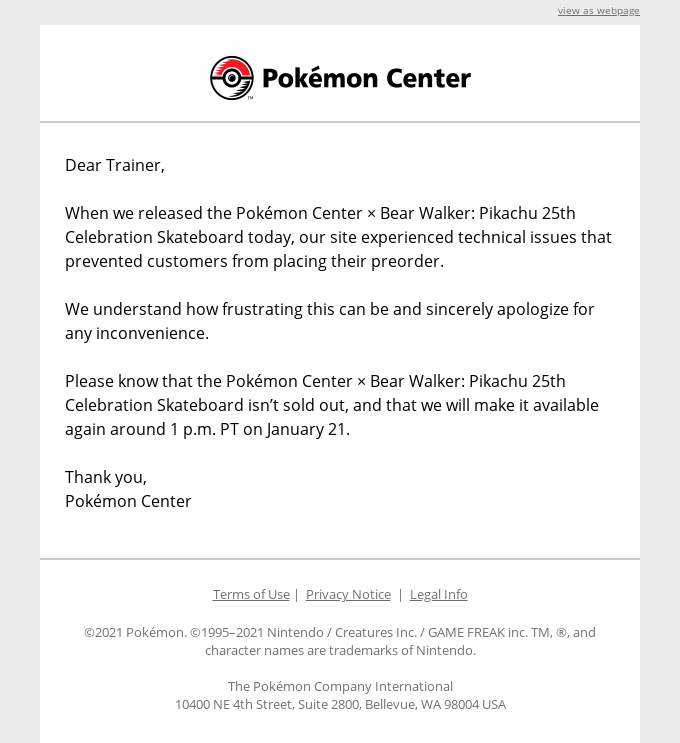
Notice how it says in the above example, “We understand how frustrating this can be and sincerely apologize,” then clearly explains the fix and timeline.
That approach—apologize, explain, solve—checks all the right boxes.
- Avoid Blaming: Don’t say things like “You should have…”. Stick to facts and solutions.
- Be Specific: Offer concrete next steps. For instance, “You will get a tracking link by tomorrow” or “I’ve issued the refund today.”
- Don’t Delay: Respond quickly. Even an auto-reply that you received their message can help calm nerves. Customers want to know you’re taking them seriously.
Sample Responses for Common Angry Email Scenarios
Below are a few example scenarios and how a professional response to angry email might look. These are templates you can adapt.
Rude or Demanding Email
Scenario: The customer writes in all caps, “I DEMAND A REFUND NOW! Your product is trash.”
Response:
Dear [Customer Name],
I’m truly sorry you had this experience. I understand how upset you must feel.
We take quality very seriously, and I regret that our product did not meet your expectations.
I have processed a full refund for your order and you should see it on your statement in 3–5 business days.
We’d also like to offer you a 20% discount on your next purchase as a gesture of goodwill.
Thank you for bringing this to my attention. I hope we can make this right for you.
Best regards,
[Your Name]
[Company Support Team]This reply stays calm, apologizes, and solves the issue (refund and discount) without mirroring the customer’s anger.
Technical Issue/Wait Time
Scenario: A customer complaints, “It’s been 10 days and my website still isn’t working! You’re incompetent!”
Response:
Hi [Customer Name],
I’m very sorry you’re having ongoing issues with your site. I understand how frustrating this delay is.
Our team is looking into the technical problem as we speak. In the meantime, you might try [quick workaround].
As an apology for the inconvenience, I’ve applied a credit to your account for this month’s service. You can expect a full update by tomorrow.
Thank you for your patience and for letting us fix this.
Sincerely,
[Your Name]
[Support Engineer]Here we apologize and explain, then offer a credit (solution) and a timeline. The wording “I understand how frustrating this is” shows empathy.
Repeated Complaint
Scenario: The customer says, “I’ve emailed twice and no one’s fixed my issue yet.”
Response:
Hello [Customer Name],
I apologize that your issue wasn’t resolved sooner. You have every right to be upset that you had to follow up.
We’ve reviewed your case and see what went wrong. I’ve personally assigned our senior technician to your ticket and we will resolve it by the end of day today.
I really appreciate your patience, and I’m committed to making this right.
Thank you,
[Your Name]
[Title]This message addresses the repeated complaint head-on: apologize for the delay, explain the fix (senior tech), and thank them. The tone is respectful and action-oriented.
Angry Email Example and Handling
Subject: **UNSATISFIED WITH YOUR SERVICE**
I am fed up with this. I paid extra and nothing was delivered! No one has answered me, and I am getting NO information. I have told you all the details THREE times now. Your company is unprofessional and I want this fixed now, or I will complain to everyone.
This email is furious and demanding. It feels personal. Here’s how to handle it step by step:
- Pause and Remind Yourself: Don’t take insults personally. The customer is venting frustration.
- Empathize and Apologize: Start your reply by recognizing their ordeal. For example, “Dear [Name], I’m very sorry for the trouble and confusion you’ve experienced. I understand how upsetting it is when expectations aren’t met.” This diffuses immediate anger by showing you care.
- Address Their Points Calmly: Confirm you see their history of attempts. Say something like, “I see that you’ve contacted us multiple times and still don’t have an answer. That’s not the experience we aim for.” Apologize again for the oversight.
- Take Action: Clearly state what you will do. E.g., “I’ve looked into your order. It appears our system failed to notify us. I’m expediting your delivery at no extra charge, and I’ve also added a partial refund. You will receive a new tracking number by this evening.”
- Invite Further Communication: End with an offer to help more: “Please let me know if you have any other questions. We value you as a customer and want to earn back your trust.” Sign off politely.
The response might be:
Dear [Name],
I’m very sorry that this happened and I understand why you’re upset. You are right to expect better from us. I have personally investigated your order and see that it was mishandled on our end. I’ve arranged for a replacement shipment at no extra cost and applied a partial refund for the inconvenience. You will get a confirmation email with tracking details by tonight.
Thank you for your patience and for bringing this to our attention. I promise we’re taking steps to improve our process so this doesn’t happen again. Please let me know if there’s anything else I can do.
Sincerely,
[Your Name]
Customer Support ManagerThis reply is calm, shows understanding, and provides a clear fix. It follows the advice of experts: it does not match the customer’s tone but instead offers empathy and solution.
Use Tools and Self-Service Resources
Building processes can prevent repeated angry emails.
A shared inbox or help desk plugin makes it easy for teams to collaborate on tough cases.
Tools like Heroic Inbox let you “manage all your customer emails and support tickets with a simpler interface, and features like collaboration and automation.
With Heroic Inbox, you can assign angry emails to team members, use saved replies/templates for fast answers, and see the whole conversation history.
This keeps everyone on the same page and avoids duplicated, confusing replies.

Another big help is a good knowledge base.
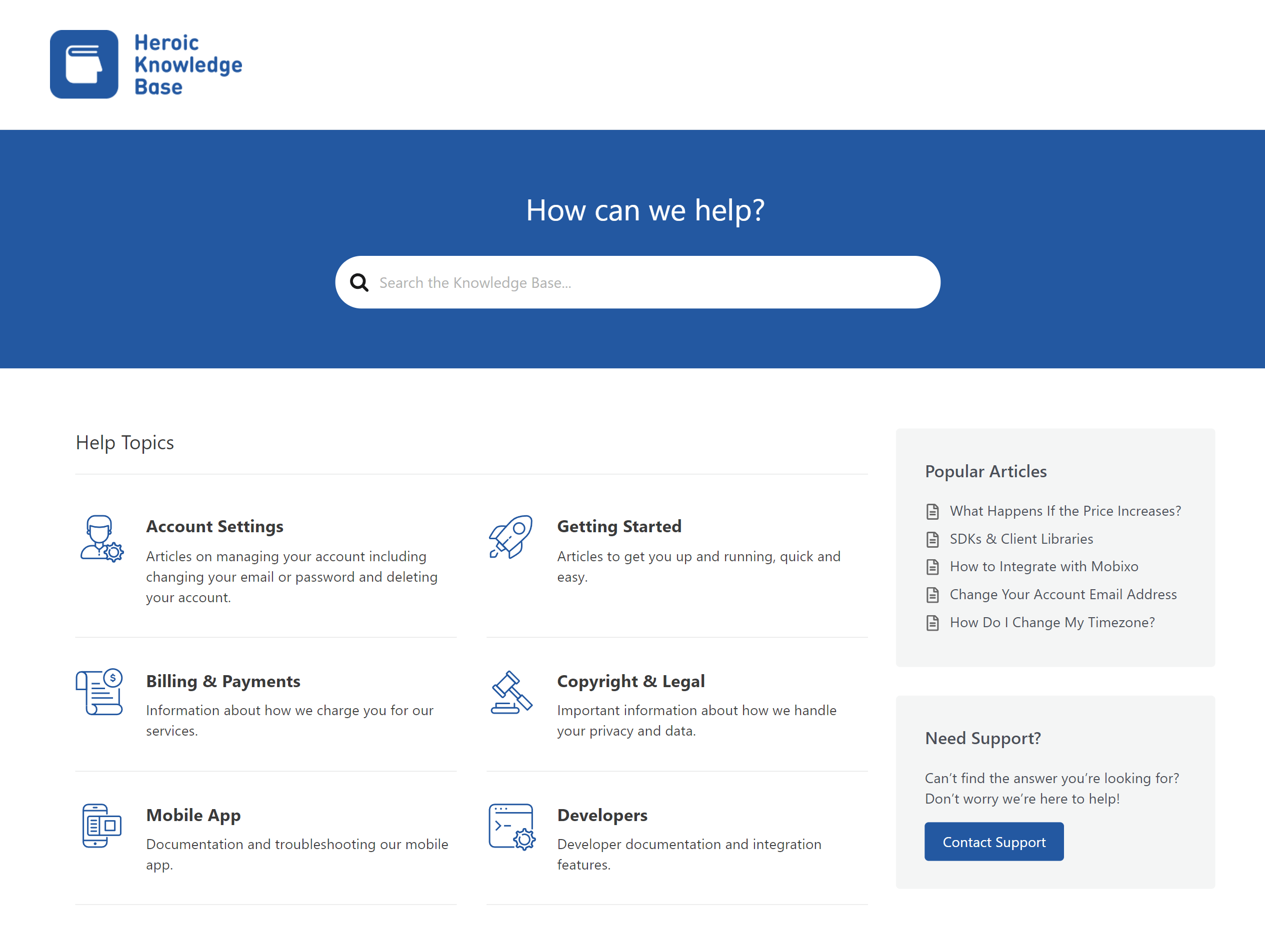
The Heroic Knowledge Base plugin, for example, lets you create a searchable FAQ or help site in minutes.
When customers can quickly find answers online, they’re less likely to email you angrily.
Heroic KB’s instant search and feedback features mean visitors often solve their own issues without ever sending an upset email
In short, Heroic Inbox handles the angry emails you do get, and Heroic Knowledge Base helps stop some problems before they start.
By combining empathy, clear communication, and the right support tools, you can turn angry messages into positive outcomes.
Each angry email handled well is an opportunity to build trust. Stay calm, professional, and helpful – and remember that even upset customers can become satisfied ones if you respond thoughtfully.
Final Thoughts: Angry Emails Aren’t the End
Let’s be honest, some emails are brutal. They catch you off guard, ruin your coffee break, and make you want to throw your keyboard.
But angry messages aren’t personal attacks, they’re signals. Something went wrong, expectations weren’t met, or someone just had a bad day.
How you respond sets the tone, defines the relationship, and protects your own peace of mind.
The strategies to manage angry emails:
- Apologizing without over-apologizing
- Showing empathy
- Being clear and kind
Aren’t just helpful for angry emails. They’re useful anywhere you need to communicate hard things with grace.
Even if the customer never says thanks, you’ll know you handled it the right way.
And if you’re handling multiple conversations, working with a team, or want better visibility across customer messages, Set up Heroic Inbox.
It turns messy email threads into organized support tickets with full histories, quick replies, and teammate visibility.
Add Heroic Knowledge Base on top, and you’ll answer fewer angry emails altogether, because customers can solve their own problems faster.
No one loves dealing with anger. But with the right mindset, some smart tools, and a few calm words, you can turn a bad email day into something surprisingly decent.
Keep your cool, choose your words, and move forward.
Further Reading
Passive Aggressive Customers: 4 Types of Nightmare Customers You Should Know
How to Handle Return and Refund Emails: Best Practices, Examples, and Templates
11 Types of Customer Service: Complete Guide with Pros and Cons
9 Best Subject Lines for Apology Emails
Professional Email Subject Lines, Examples and Tips


